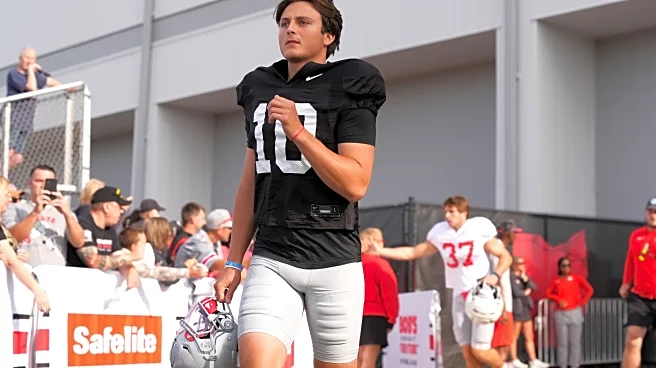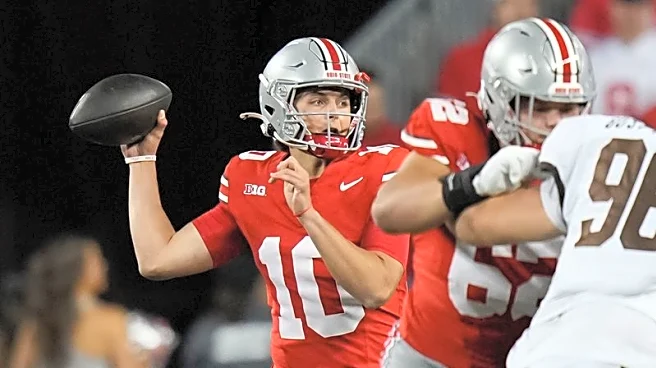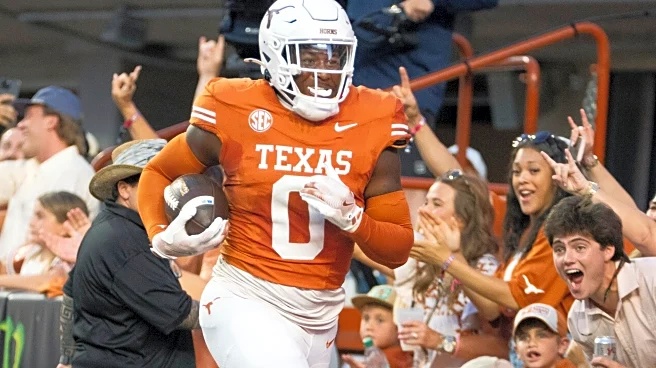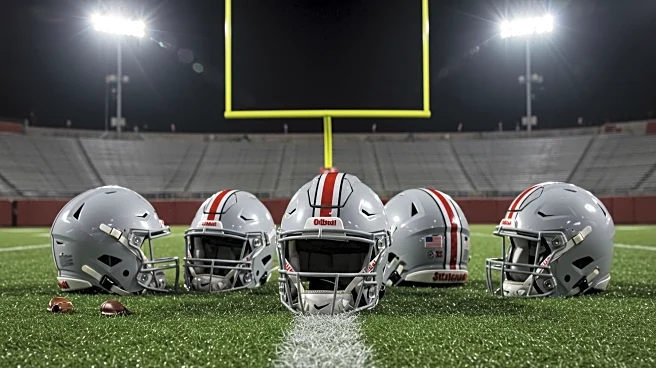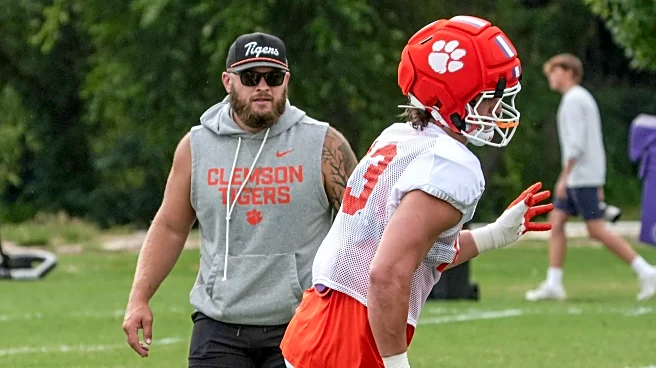What is the story about?
What's Happening?
Ohio State has announced Julian Sayin as its starting quarterback for the upcoming season. The decision follows an eight-month competition between Sayin and Lincoln Kienholz. Coach Ryan Day confirmed Sayin's role as the starter for the Buckeyes' opening game against Texas on August 30. Sayin, a five-star recruit who initially signed with Alabama, was chosen for his elite arm talent and potential long-term upside. The announcement allows Ohio State to focus on preparing for the game with a clear starting quarterback, ensuring Sayin receives the majority of practice reps with the first team.
Why It's Important?
The decision to start Julian Sayin is significant for Ohio State's football program as it sets the tone for the season and impacts the team's strategy against top-ranked Texas. Sayin's selection reflects Ohio State's commitment to developing talent from within, a strategy that could save resources in the revenue share era. The move also highlights the importance of having a stable quarterback position, which is crucial for team performance and morale. Sayin's potential to lead the team for multiple seasons offers Ohio State a chance to build a strong foundation for future success.
What's Next?
With the quarterback decision finalized, Ohio State will focus on solidifying its offensive lineup around Sayin. The team needs to finalize positions at running back and offensive line, with James Peoples expected to start at running back. The offensive line remains undecided, with several players competing for starting roles. Ohio State aims to establish a cohesive unit before the season opener against Texas, ensuring all players are prepared and aligned with the team's strategy.
Beyond the Headlines
Ohio State's decision to start Sayin may influence other teams' approaches to quarterback development and recruitment. The emphasis on internal development over external recruitment could become a trend, especially in the context of financial considerations in college sports. This approach may encourage other programs to invest more in nurturing homegrown talent, potentially altering the dynamics of college football recruitment.
AI Generated Content
Do you find this article useful?



